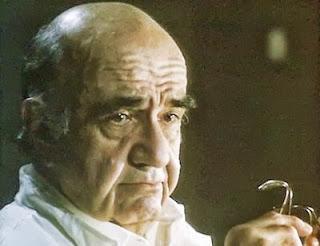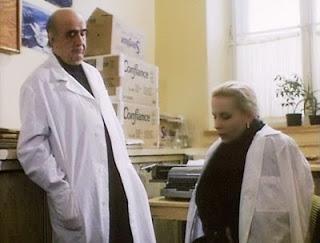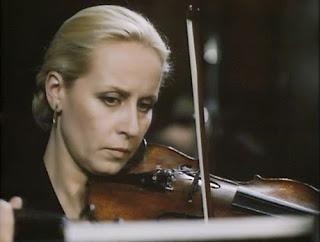
There are very few examples of movies that make you scurry to the libraries to figure out the full implications of the source material after a screening, with the implicit understanding that one needed to know more. That is the power of great cinema. Kieslowski’s ten part movie Dekalog is one of them. The late film director Stanley Kubrick had described Dekalog as the only masterpiece he could name in his lifetime. And, interestingly, Kubrick is often considered an atheist!
And the added attraction for most viewers is that, unless one is a die-hard film enthusiast, each of the ten parts can be seen and appreciated in isolation. Each of the ten parts has different characters, all living in the same condominium in Poland. Each tale is set in the late Eighties. What is common to all the ten parts is that they all have the three common creators: the director Krzysztof Kieslowski, the co-scriptwriters Krzysztof Kieslowski and Krzysztof Piesiewicz, and the music composer Zbigniew Preisner. And last but not least, the ten parts relate to the Biblical Ten Commandments, given by God to Moses—as is believed by Christians, by Jews and by Muslims. And what is most important is that none of the ten segments is overtly religious. But each tale is underpinned by the ten commandments.
The ten segments of Dekalog can be appreciated as top-notch cinema as Kubrick and most film critics have found them to be. But they can also be treasured for their unusual lateral theological discourse that a viewer will only discover if the viewer puts the cinematic tale in the perspective of what has been written about the Ten Commandments in the scriptures and by theologians of various faiths over the years. "Everyone seems to accept the Ten Commandments as a kind of moral basis," Kieslowski has said, "and everyone breaks them daily. Just the attempt to respect them is already a major achievement."
Of the 10 segments, Dekalog 2 is one of the most difficult and yet poignant segments to appreciate and savour.
A non-theological assessment of Dekalog 2. The scriptwriters present two individuals facing unusual moral dilemmas. One is an old dour oncologist (Aleksader Bardini), who has no family left—his grandchildren and daughter, all killed in a bombing. The personal loss has only accentuated his interest in life, growing indoor plants and keeping pet birds, when not tending to his cancer patients. He does not smoke cigarettes. The old man is always conscious of the importance of time. This is reinforced on the viewer subtly by his actions, his precise recollections of his grandchild’s teething troubles and the time of the day when it occurred, the necessity to cover the birdcage with a cloth so that it could sleep, his need to collect milk (milk is a connecting symbol for most parts of the Dekalog) in the morning, etc. The good doctor spends his time treating his patients hoping they survive. Deaths of his near ones have made him appreciate life and the importance of children.

"One thing I know is I don't know"
The counterpoint to the old man is an attractive lady Dorota Geller (played by the wonderful Krystyna Janda) in her thirties who also lives in the condominium. She has met the old doctor in the past, presumably to apologize for having run over his pet dog in her car. Unlike the old man she is unfortunately associated with death: her husband is dying from cancer, she is killing her well tended indoor plants out of exasperation, and is seriously considering aborting a 3-month old child conceived out of wedlock. She is a chain smoker, which any oncologist would know is dangerous. And she is so disoriented with stress and sleeplessness that she has to ask a postman for the time of the day.

To bear or not to bear a child
The two opposites meet because Geller’s husband is being treated by the old doctor. She needs to know if her husband will live, in which case she will abort her foetus, as she still loves her husband. Dorota also knows that if she aborts she is not likely to have a child again with her husband. If the husband is likely to die, she could keep the baby and possibly live with her lover. The outcome is unpredictable for both the key characters.
A mysterious silent character, playing a hospital orderly (who surfaces in 9 of the 10 segments of Dekalog) observes the key players making the key decisions, the wife at her seriously sick husband’s bedside and the doctor looking at the growth of cancer cells of the woman’s husband in the laboratory, with his understudy confirming the disease is spreading. A keen observer will notice the ambiguity in the old doctor’s body language.

"Don't do it.."
As a movie just 54 minutes long, the filmmakers use every second and every body movement of each character, to flesh out the moral dilemma that an ordinary individual could face. The viewer at the end of the movie will recall the statement of the old wizened doctor “One thing I know is I don’t know.” Humility comes from knowledge.
Dekalog 2 is not just a great story, it is a movie of great performances, understatements and pregnant silences, punctuated with amazing music used with discretion. One can enjoy the film as a great tale superbly told. But is that all?
A theological assessment ofDekalog 2. According to the Roman Catholic Church, the second of the 10 Commandments is “You shall not take the name of the Lord thy God in vain,” as stated in the Book of Deutronomy (5:11). Of the two scriptwriters, Piesiewicz was a Roman Catholic and Kieslowski a possible atheist. The lead actress Ms Janda was a Lutheran.
There are only two occasions in the movie that overtly brings up religion. Mrs Geller (Janda) asks the doctor “Do you believe in God?” The doctor’s response is “I have a God. This is enough for me only.” To this answer, Mrs Geller responds “Your private one? Then ask your God for absolution.”
The second is a critical point in the film where the lady is told she should not abort the foetus by the doctor with the clear words “Don’t do it. He is going to die.” To this, the lady responds, “Can you swear?” And the old man responds. “I swear.” One assumes you swear by God’s name.
If we go by the words of Deutronomy 5:11, the scriptwriters have dished out two occasions where “God’s” name has been taken in vain.
Interestingly the second Commandment “You shall not take the name of the Lord thy God in vain” mentioned above is the third Commandment for Protestant Christians. For the Protestant Christian Church, the second Commandment is “You shall not make for yourself a carved image, or any likeness of anything that is in heaven above, or that is on the earth beneath, or that is in the water under the earth. You shall not bow down to them or serve them; for I the LORD your God am a jealous God, visiting the iniquity of the fathers on the children to the third and fourth generation of those who hate me, but showing steadfast love to thousands of those who love me and keep my commandments” Deutronomy 5(8-10). As the Catholic Church finds no problem with images of Christ and the Virgin Mary, the second Commandment observed by the Protestant Church is not underscored by the Catholics. In Protestant churches, the crucified Christ and the Virgin Mary are never exhibited, which is strangely in parallel with Muslim concepts. The only symbol that you find in Protestant churches is a bare cross.
That does not mean that the Roman Catholic Church has only nine Commandments. For the Protestants, the ninth Commandment observed by Roman Catholics ”You shall not covet your neighbor’s wife”, is merged in the tenth “You shall not covet anything that belongs to your neighbor.’’ Thus both Churches observe Ten Commandments.

" I wan't to hear you play the violin in the Philharmonic Orchestra"
Now which version of the Second Commandment is applicable to Dekalog 2? The screenplay writers of Dekalog were not novices. Dekalog 7, if we go by Roman Catholic list of Ten Commandments refers to “You shall not steal.” Any viewer of Dekalog 7 will note that there is no conventional stealing but only abduction by a mother of her own biological daughter. The screenplay writers in Dekalog 7 have adopted the Jewish interpretation of the Commandment, which is “You shall not kidnap”, as the Jews aver that stealing of goods is covered by the Tenth Commandment, “You shall not covet your neighbor’s goods.”
If we accept that Kieslowski and Piesiewicz were looking at a larger audience than Roman Catholics, could the Protestants' Second Commandment be equally applicable to Dekalog 2? Could the God in question be the good dying husband and the ‘carved’ image of the husband be the wife’s lover outside her marriage? This dual possibility is what makes Dekalog 2 difficult to comprehend with any accuracy. Kieslowski and Piesiewicz love to make the viewer think outside the box—they don’t provide answers. This is why Dekalog can be enjoyed at a level beyond pure cinematic aesthetics. Kubrick had noticed it.
P.S. Dekalog is one of the author’s top 10 films of all time. Reviews of Dekalog 5 and Dekalog 7 have appeared earlier on this blog. Kieslowksi’s Three Colors Blue, White and Red are among the author’s top 100 films. The author had the privilege to meet Kieslowski during a film festival in Bengaluru, India, in 1982 but did not consider him, at that time, sufficiently important for an in-depth interview because he had not yet made his masterpieces--all made 6 or more years later.
<a href="http://feedjit.com/">Feedjit Live Website Statistics</a>

